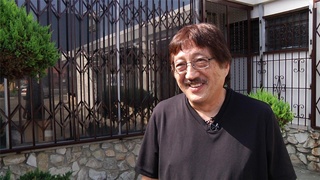Interviews
To think in one language and live in another (Spanish)
(Spanish) I believe that my grandfather thought in Japanese but had to speak in another language…And that is a mark of being a permanent foreigner. To think in one language and to live in another is something that marks you. I believe that he was able, in some ways, to make the two things compatible; he was reserved but he had something of a certain quality, [that] I don’t know how the Japanese are, a certain quality that was half Argentine…I don’t know if you know what I mean. Quality -- I don’t know if the word I want to use is quality -- or like winking to your granddaughters [like us], the small girls with whom he could have been more distant or cold…but he wasn’t at all. Do you understand? Perhaps I would have liked to have had known him, like I told you before, in a more adult [context, which] was not to be because he died when I was very young. But for example, now, I began to study Japanese many years after his death. Something that would have given me so much joy if it had happened [would have been if] the two of us could have spoken to each other in Japanese even if it was only five words. It is something that would have given me joy if it had happened, but it was not to be.
Date: July 12, 2006
Location: Buenos Aires, Argentina
Interviewer: Takeshi Nishimura, Ricardo Hokama
Contributed by: Centro Nikkei Argentino
Explore More Videos








Postwar school-life
(b. 1930) Half Japanese and grew up in both Japan and the United States.

On Challenging Institutions
(1938-2020) Japanese American attorney and civil rights activist

Pop and Balls
(1938-2020) Japanese American attorney and civil rights activist

Re-examining Identity
(1941-2018) Japanese Canadian photojournalist and activist




Conflicted about immigrating to America (Japanese)
(b. 1925) War bride
